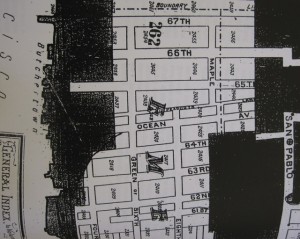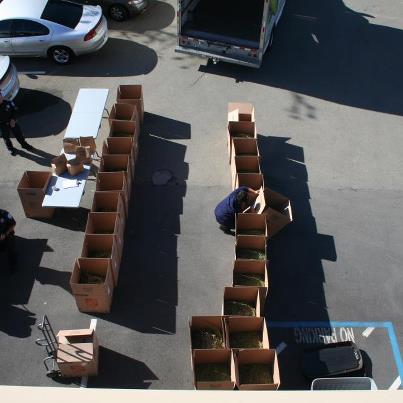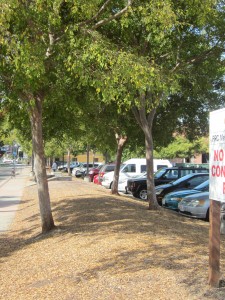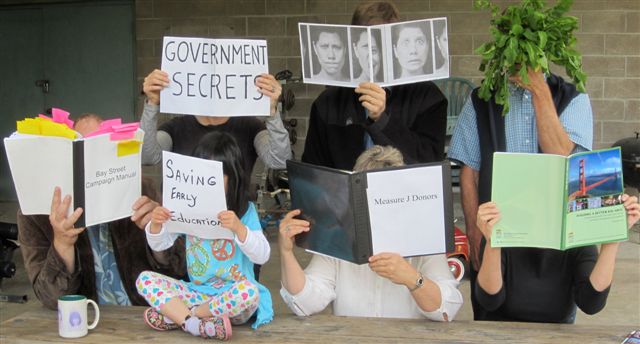Richard Ambro is a historian who has lived in the North End of Emeryville for more than 26 years. His goal is to preserve atleast some of the mature trees, historic homes, and general character of the neighborhood. This article is the first in a series about the history and evolution of the North End. Ambro holds a PhD in archaeology and anthropology from UC Berkeley.
First in a Series
What is a neighborhood?
A neighborhood is a geographically localized community within a larger city, town or suburb. Neighborhoods are generally defined as specific geographic areas as well as a set of social networks. They are the personal settings and situations where residents seek to realize or share common values, raise children, and maintain effective social control. (Wikipedia).
_______________________
The 64th Street neighborhood where I live is a block-wide (east-west) strip sandwiched between the Oakland border at Vallejo Street and the former light industrial district west of Doyle Street, in the NE corner of Emeryville. This neighborhood has a long and interesting history. It was originally an outlier of the area once known as Butchertown – the meat packing district established in the late 19th century, on the west side of the Southern Pacific railroad tracks at 65th Street. Our neighborhood was where many of the Butchertown workers lived, within easy walking distance of their jobs.
.”

Map of Butchertown and Northwest Emeryville in 1903: Note location of 65th Street, San Pablo Avenue, and shoreline; Map re-oriented so that North points up. (CLICK ON ALL PHOTOS TO ENLARGE.)
Butchertown had its origins in the Gold Rush. John Allen Peabody was among the first who came looking for gold. Arriving in 1851, Peabody was a sailor who built a small wharf on the bayshore of what is now Emeryville. By 1857, he had a warehouse adjacent to the wharf, and a trail, known as Peabody Lane, went from the warehouse to San Pablo Avenue. Today, a tiny stretch of Peabody Lane remains, a dead-end behind a small group of historic houses on the north side of Ocean Avenue.
The transcontinental railroad was completed in 1869 and terminated in Oakland. In about 1878, the Northern Railroad, a subsidiary of the Central Pacific Railroad (later Southern Pacific) built a line along the bayshore in Emeryville, prompting the stockyards and slaughter houses to move from downtown Oakland to the area where 65th Street crosses the tracks.
Butchertown boomed between 1880 and 1930, growing into a collection of stockyards, slaughterhouses, meatpackers, tanneries, rendering plants, bone fertilizer plants, glue factories, and animal corrals and pens on both sides of the tracks between Bay and Overland streets, from Folger Street north to 60th Street. The western edge of Butchertown along Bay Street was actually on pilings over the bay, allowing the animal wastes and who knows what else to wash away with the tide. Warm weather made the air fetid with the smell of manure, blood, bones, and decay. It is no wonder that while local trains stopped at 65th Street (formerly Dalton Avenue) – the Stockyards Station – mainline passenger trains roared past without slowing.
Butchertown employees, many of Italian and Portuguese descent, included slaughterers, weighers, boneyard workers, tanners, hog and sheep tenders, drivers, carpenters, cooks, waiters, clerks, teamsters, salesmen, and sausage and soap makers. Many were single men, either seasonal or long-term workers who lived at nearby hotels, like the Golden Gate Hotel or similar rooming houses, despite the noise and smell. The permanent workers with families lived further east, closer to Hollis Street and all the way to San Pablo Avenue. Some built or purchased homes for their families. When Emeryville incorporated in 1896, breaking away from Oakland, Butchertown went with it.


Butchertown looking North in 1914: Note sheep in foreground, left; railroad tracks, and wharf jutting into bay in upper left corner (Emeryville Historical Society).
The eastern part of Butchertown was still largely undeveloped in the late 19th and early 20th centuries and retained a rural charm. In the 1920s, Edwin V. Warren ran a dairy at 1294 65th Street. His children played in the pens with the animals, with the houses along the south side of Ocean Avenue visible in the background.

The Edwin V. Warren Children in the 1920s at their father’s dairy at 1294 65th Street; view looks south toward houses on the south side of Ocean Avenue at Doyle Street.
But soon the Great Depression hit, and one by one the Butchertown businesses closed, leaving lots of unemployed workers. World War II briefly increased the demand for meat, but many of the remaining feed lots were taken over by the military for storage and vehicles.
After the war, Interstate 80 was constructed on fill 1,000 feet west of the original shoreline, stopping the tidal flushing of Butchertown and trapping the stagnant waters. These areas were gradually filled in, increasing the area of Emeryville. These filled-in areas were soon developed by heavy industry like Grove Valve and Ryerson Steel. Those and others, like Andrews Lumber and the LaCoste Meat Company, remained into the 1980s. Through this transition, some of the old Butchertown businesses remained, or remade themselves.
North End resident Betty Rodoni said that in 1944, her family – long-time residents of Butchertown – moved to a house at 1298 65th Street where her father built a restaurant and bar in front called Rodoni’s 6500 Club. The bar and restaurant were an immediate success, and workers from the nearby factories flocked there after work. When I moved to 64th Street around 1986, Rodoni’s 6500 Club bar and restaurant was still open (where Café Aquarius is now), but finally closed in 2002. The private Italian Fratellanza Club is still operating at 1140 66th Street, just over the Oakland border.
(To comment, or to read the comments of others, click on the headline to go to the story page, then scroll to the bottom.)









